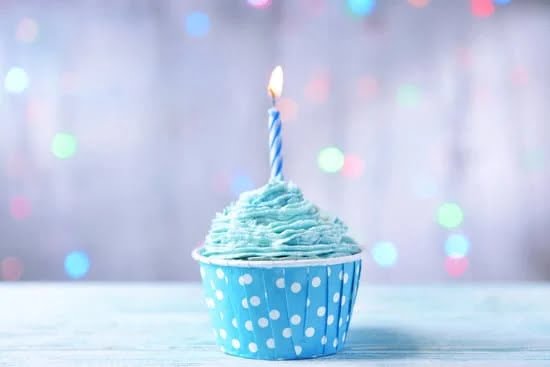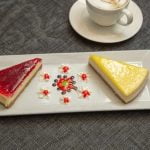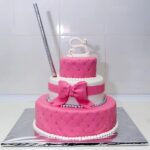Cake decorating has always been a beloved art form, captivating both professional bakers and home enthusiasts alike. Whether it’s a simple celebration cake or an intricate showpiece, the process of transforming a plain cake into a work of edible art requires creative vision and skilled craftsmanship. One aspect of cake decorating that often sparks curiosity and excitement is the variety of shapes and names associated with these delectable creations.
The art of cake decorating goes far beyond simply mixing ingredients and applying icing. It involves careful planning, meticulous attention to detail, and a keen eye for design.
From envisioning the overall theme to selecting color palettes and textures, decorators tirelessly work to bring their imaginative ideas to life on the canvas of a cake. The shape of the cake plays an essential role in this creative process, as it sets the foundation for how the final product will look and feel.
When it comes to cake shapes, there are countless options to choose from. Round cakes provide elegance and simplicity, square cakes offer clean lines and modernity, while rectangular cakes add a touch of versatility. These popular shapes are not only visually pleasing but also practical in terms of cutting and serving portions.
But beyond traditional shapes, cake decorators have pushed the boundaries by experimenting with unconventional designs that can capture attention at any event or celebration. Heart-shaped cakes radiate romance, star-shaped cakes exude magic, and animal-shaped cakes delight children and adults alike.
In addition to their visual appeal, cake shape names can carry symbolic meanings or represent specific themes. Wedding cakes often feature tiered designs symbolizing union and commitment, while birthday cakes may showcase numbers representing milestones in someone’s life. The combination of shape and name helps tell a story or convey emotions through edible artistry.
As we explore the world of cake decorating shape names further in this article, we will delve into edible materials used to create intricate designs like fondant decorations or sugar sculptures. Furthermore, we will celebrate renowned cake designers and their signature cake shape names, discussing their unique creative processes and inspirations.
Whether you’re a novice in the kitchen or a seasoned professional, we will also provide tips for coming up with catchy and creative cake shape names that will elevate your next baking masterpiece. So grab your mixing bowls and let’s embark on a delicious journey through the alluring world of cake decorating shape names.
The Art of Cake Decorating
Cake decorating is a true art form that requires creativity, skill, and precision. It is the process of transforming a plain cake into an exquisite masterpiece using various techniques, tools, and ingredients. The beauty of cake decorating lies in its ability to showcase the decorator’s artistic vision and bring joy to those who see and taste it.
One crucial aspect of the art of cake decorating is the creative process involved. Cake decorators must first have a clear concept or idea in mind for their design. They may gather inspiration from various sources such as nature, architecture, fashion, or personal experiences. Once they have a vision in mind, they brainstorm and sketch out their ideas before executing them on the actual cake.
The skillset required for cake decorating is vast and diverse. Decorators need to possess technical skills such as leveling cakes, stacking layers evenly, and applying smooth icing surfaces. Additionally, they must master various piped techniques like borders, flowers, lettering, or intricate designs. Other skills include fondant work like covering cakes uniformly or creating detailed decorations such as ruffles or bows. With practice and experience, decorators can refine their skills and develop their signature styles.
To be successful in cake decorating also requires an understanding of flavor profiles and the ability to balance taste with aesthetics. Cake decorators must select appropriate flavors that complement their designs while ensuring that the final product tastes as good as it looks.
Key elements of the creative process
- Gathering inspiration from various sources.
- Brainstorming ideas and sketching out designs.
- Executing ideas on the actual cake.
Skills needed for cake decorating
- Technical skills such as leveling cakes and applying smooth icing surfaces.
- Piped techniques like borders, flowers, lettering.
- Fondant work including covering cakes uniformly or creating detailed decorations.
- Balancing taste with aesthetics.
Popular Cake Shape Names
Cake decorators often use various shapes as the foundation for their creations, and knowing the different cake shape names is essential for both amateur bakers and professional decorators. The popularity of certain cake shapes can be attributed to their versatility and ease of decoration.
One of the most common cake shapes is the round cake. This classic shape is timeless and versatile, making it suitable for any occasion. Round cakes are often used as tiered wedding cakes or birthday cakes. The smooth edges and symmetrical shape make them easy to stack, frost, and decorate with intricate piping or fondant designs.
- Circular Tiers: One popular way to showcase a round cake is by creating multiple tiers of varying sizes. This creates an elegant and visually appealing display that can be decorated to match any theme or event.
- Cake Pops: Another fun way to utilize the round shape in cake decorating is by turning it into bite-sized treats like cake pops. These small rounds of cake on a stick can be decorated in various ways using colorful icing, sprinkles, or even molded chocolate coatings.
Square cakes provide a modern and clean aesthetic that appeals to many decorators. Unlike round cakes, square cakes have sharp corners that lend themselves well to geometric designs.
- Checkerboard Patterns: One creative way to take advantage of the square shape is by creating checkerboard patterns on the inside of the cake. By alternating two flavors or colors in a grid-like pattern, decorators can achieve a unique design once the cake is sliced.
- Gift Box Cakes: Square-shaped cakes are also commonly used when making gift box themed cakes. By adding realistic details such as ribbons, bows, and wrapping paper, decorators can create visually stunning cakes that resemble beautifully wrapped presents.
Rectangular cakes are often chosen for sheet cakes or larger gatherings due to their practicality and ability to serve a large number of people.
- Photo Cakes: One popular trend with rectangular sheet cakes is printing edible images directly onto the cake. This allows decorators to showcase personalized photos or designs on a cake, making it an excellent choice for birthdays or anniversaries.
- Novelty Cakes: The rectangular shape also lends itself well to novelty cakes that mimic everyday objects like laptops, books, or game consoles. The broad surface area provides decorators with ample space to incorporate intricate details and realistic features.
Knowing the popular cake shape names is crucial for any aspiring cake decorator. Whether it’s using round cakes for tiered creations, square cakes for geometric designs, or rectangular cakes for sheet cakes and novelty designs, understanding the versatility of each shape allows decorators to bring their creative visions to life.
Unconventional Cake Shapes
Cake decorating is an art form that allows bakers to showcase their creativity and skill. While round, square, and rectangular cakes are the most common shapes, there are also a plethora of unconventional cake shapes that can bring a touch of whimsy and surprise to any celebration. In this section, we will explore unique and unexpected cake shapes such as heart, star, and animal designs.
Heart-shaped cakes are a popular choice for romantic occasions such as weddings and anniversaries. The symbol of love and affection, heart-shaped cakes can be decorated with intricate piping designs or adorned with edible flowers to create a stunning centerpiece for any special event.
Star-shaped cakes offer a fun and festive twist to traditional cake shapes. These cakes can be a fitting choice for birthdays or celebrations related to achievements or success. Bakers can use brightly colored frosting to accentuate the star shape or create a galaxy-themed design using edible glitter.
Animal-shaped cakes are always a hit at children’s birthday parties. From cute puppies to fierce lions, the possibilities are endless when it comes to creating animal-inspired cake designs. Using fondant or other modeling materials, bakers can sculpt realistic or cartoon-like animals that will leave both kids and adults amazed.
| Cake Shape | Popularity Ranking |
|---|---|
| Heart | 1 |
| Star | 3 |
| Animal | 5 |
As shown in the table above, heart-shaped cakes are the most popular among these unconventional shapes. However, star-shaped and animal-shaped cakes also rank high in popularity. This reflects the growing trend of bakers and customers seeking unique and unexpected designs to make their cakes stand out.
Symbolic Cake Shape Names
Wedding Cakes
Wedding cakes hold a special significance in the cake decorating world, and their shape often reflects the joyous occasion they are meant to celebrate. One of the most popular and traditional shapes for wedding cakes is the tiered or stacked design. This shape symbolizes unity and the joining of two lives together. The tiers are often adorned with intricate decorations such as flowers, ribbons, or lace to further enhance the elegant and romantic atmosphere of a wedding.
Another symbolic cake shape commonly found at weddings is the silhouette of a bride and groom. These cakes are often made using a specially designed mold or by sculpting the couple out of fondant or gum paste. This shape serves as a representation of the couple themselves and can be customized to resemble their appearance, outfits, or even hobbies. It adds a personal touch to the wedding celebration and becomes a memorable centerpiece for all attendees to admire.
Birthday Cakes
Birthday cakes also have their own range of symbolic shapes that help convey messages of celebration and joy. One popular shape for birthday cakes is that of numbers or letters representing the age being celebrated. For children’s birthdays especially, it can be exciting to see their age spelled out in cake form, making them feel special on their big day.
Candles are another iconic element incorporated into birthday cakes. While candles themselves may not be considered a specific “shape,” they play a significant role in birthday cake tradition. The number of candles represents the person’s age, and blowing them out is seen as making a wish for the year ahead.
Special Occasion Cakes
Beyond weddings and birthdays, there are many other special occasions where cake shape names hold important meanings. For example, graduation cakes often feature cap-shaped decorations or tiered designs resembling diplomas to mark this significant milestone in someone’s life.
Additionally, baby shower cakes frequently showcase shapes that represent the impending arrival, such as baby booties, rattles, or onesies. These designs not only celebrate the upcoming birth but also serve as decoration and conversation pieces for guests.
Cake decorators continually find new and innovative ways to incorporate meaningful shapes into their designs for all sorts of occasions. By using cake shapes to represent specific themes or symbols, these creations become more than just desserts; they become tangible expressions of our emotions and celebrations.
Edible Cake Shapes
In the world of cake decorating, creating intricate and visually stunning cake shapes is a true art form. One of the techniques used by skilled cake decorators is the use of edible materials to bring their creations to life. Edible cake shapes add an extra level of creativity and detail, transforming ordinary cakes into extraordinary works of art.
One popular method for creating edible cake shapes is through the use of fondant decorations. Fondant is a pliable icing made from ingredients like sugar, water, and gelatin. It can be molded into any shape, allowing decorators to make everything from flowers and bows to intricate patterns and figurines. Fondant shapes are typically added as decorative elements atop cakes or used to cover entire cakes for a sleek and polished finish.
Sugar sculptures are another way decorators create edible cake shapes that wow audiences. Sugar sculptures involve working with melted sugar syrup that is cooled and hardened into various shapes. Skilled decorators can manipulate this medium to create delicate flowers, ornate patterns, or even elaborate scenes. These impressive sugar sculptures not only add dimension and visual interest to cakes but also showcase the expertise and craftsmanship of the decorator.
Not only do these edible cake shapes elevate the aesthetic appeal of a cake, but they also offer a unique sensory experience for those who enjoy them. From intricately designed fondant decorations to delicate sugar sculptures, these edible elements can be admired visually before being enjoyed deliciously by those lucky enough to indulge in a slice.
| Edible Materials | Description |
|---|---|
| Fondant | A pliable icing made from sugar, water, and gelatin that can be molded into any shape |
| Sugar Sculptures | Shapes created by working with melted sugar syrup that is cooled and hardened |
Unique Cake Designers and Their Signature Shape Names
Renowned cake designers have revolutionized the world of cake decorating by introducing their own unique and iconic cake shape names. These designers have not only mastered the creative process, but they have also brought a new level of innovation and artistry to their craft. In this section, we will explore some of these talented individuals and learn about their signature shape names, as well as delve into the inspiration and creative process behind their designs.
Designer A: The Architect of Cakes
One renowned cake designer, known as “The Architect of Cakes,” is celebrated for his elaborate and structural designs. His signature shape names include “Towering Heights” and “Structural Symphony.” Inspired by architectural marvels around the world, such as skyscrapers and bridges, this designer strives to create cakes that are not only visually stunning but also structurally sound. His creative process involves meticulous planning and engineering to ensure each cake achieves its intended shape while being deliciously edible.
Designer B: The Nature Whisperer
Another notable cake designer, referred to as “The Nature Whisperer,” draws inspiration from the natural world when crafting her cakes. Her signature shape names include “Blooming Blossom” and “Enchanted Forest.” She incorporates elements like flowers, trees, and animals into her designs to create cakes that evoke a sense of wonder and charm. This designer’s creative process often begins with sketching nature-inspired concepts and then translating those ideas into three-dimensional edible works of art.
Designer C: The Storyteller
“The Storyteller” is a renowned cake designer who specializes in creating narrative-driven cakes. Each of his cakes tells a unique story through its design and shape names such as “Once Upon a Time” or “Pirate’s Treasure.”
Combining elements like characters, settings, and symbols connected to the theme, he weaves captivating tales through his meticulously crafted cakes. The creative process for this designer involves researching and immersing himself in the chosen theme, selecting appropriate shape names that not only reflect the story but also intrigue and engage viewers.
These unique cake designers have made their mark in the world of cake decorating with their distinctive signature shape names. Through their creativity and innovation, they have elevated cake decorating into an art form that goes beyond mere aesthetics. Whether inspired by architecture, nature, or storytelling, these designers continue to inspire both amateur bakers and professional decorators to push the boundaries of cake design and create edible masterpieces like never before.
Tips for Naming Cake Shapes
When it comes to cake decorating, finding the perfect shape name for your creation can enhance its appeal and make it even more memorable. Whether you’re a home baker or a professional decorator, coming up with creative and catchy names for your cake shapes can be a fun and exciting part of the process. In this section, we will provide some helpful tips and suggestions for naming cake shapes that will captivate your audience.
Firstly, consider the theme or occasion for which the cake is being made. Is it a birthday cake? Perhaps you could incorporate the age or interests of the person into the shape name. For example, a soccer-themed cake could be called “The Winning Goal,” while a princess-themed cake could be named “Enchanted Castle.” By tying the shape name to the theme, you create an instant connection and intrigue.
Secondly, think about using descriptive adjectives to highlight special features of your cake shape. If you’ve created an intricately layered round cake, you might use words like “Regal Layers” or “Elegant Ripples.” A square cake with clean lines could be called “Sleek Edges” or “Modern Chic.” These descriptive names not only capture attention but also convey your confidence in executing that particular shape.
Lastly, don’t hesitate to inject some humor into your cake shape names. Puns and wordplay can add an element of lightheartedness and surprise. For example, if you’ve sculpted a cowboy hat-shaped cake, why not call it “Hats Off to Yee-Haw”? A whimsical animal-shaped cake could be playfully named “Critter Creations.” By incorporating humor into your shape names, you show off your personality as a decorator while engaging your audience.
Conclusion
In conclusion, cake shape names play a significant role in the world of cake decorating. They not only serve as a way to identify different cake designs but also add an element of creativity and intrigue to the art form. Whether it is through traditional shapes like round, square, and rectangular cakes or more unconventional designs such as hearts, stars, and animal shapes, each cake shape name brings its own unique charm.
Cake shape names can also hold special meanings or represent specific themes. Wedding cakes often feature tiered designs symbolizing unity and celebration of love. Birthday cakes may take on shapes that reflect the interests or hobbies of the recipient. These symbolic cake shapes add a touch of personalization and make the occasion even more special.
Furthermore, edible materials like fondant decorations and sugar sculptures allow decorators to create intricate and lifelike cake shapes. These edible works of art elevate cake decorating to new heights and showcase the immense talent and skill of professional decorators. The use of these materials enables endless possibilities for creating visually stunning and delicious masterpieces.
Whether you are a home baker or a professional decorator, coming up with creative and catchy cake shape names can be a fun challenge. It allows you to infuse your personal style and imagination into your creations. Take inspiration from renowned cake designers who have established their signature shape names through their artistic vision. Remember to consider the theme or occasion for which the cake is being created when naming your designs.
Overall, the fascination with cake shape names continues to captivate both decorators and cake enthusiasts alike. They add depth and beauty to the art form, allowing cakes to become not just delicious treats but also visual masterpieces that evoke joy and wonderment in those who behold them.
So next time you find yourself baking or ordering a cake, take a moment to appreciate the thoughtfulness behind its shape name for it is an integral part of what makes each creation truly unique.
Frequently Asked Questions
What are the different shapes of cake?
Cakes come in various shapes depending on the occasion and personal preferences. The most common shape is a round cake, which is the traditional shape for birthday cakes. Round cakes are versatile and can be easily layered, stacked, or sculpted into different designs.
Another popular shape is the rectangular or square cake, often used for sheet cakes or special occasions like weddings or anniversaries. Other shapes include heart-shaped cakes, oval-shaped cakes, and tiered cakes, which are created by stacking multiple layers of different shapes on top of each other.
What are the 5 kinds of cake decorating?
Cake decorating offers a wide range of techniques to transform plain cakes into stunning masterpieces. One popular kind of cake decorating is buttercream frosting decoration. Buttercream allows decorators to create various textures and patterns using piping bags and different nozzles, such as rosettes, stars, and borders.
Fondant covering is another technique where a thin layer of smooth fondant is placed over the cake to create a flawless canvas for more intricate decorations like flowers or sculpted figures. Royal icing decoration involves piping intricate designs with a mixture of powdered sugar, egg whites, and water that hardens when dry. Other methods include airbrushing to achieve smooth gradients of colors and creating edible images using food coloring printer technology.
What are the seven 7 main types of decorations for pastries?
Pastries can be beautifully adorned with an array of decorative elements that enhance their visual appeal and complement their flavors. The seven main types of decorations for pastries include piping techniques such as rosettes, swirls, zig-zags, or lines created with buttercream frosting or icing piped through a pastry bag fitted with various tips. Fondant decorations involve rolling out thin sheets of fondant to cut out shapes like flowers, ribbons, or bows that can be attached to pastries using edible adhesive or water as glue. Chocolate decorations add elegance using melted chocolate poured into molds to create intricate designs like curls or leaves that can adorn pastries such as cakes or cupcakes.
Royal icing decorations are often used to create delicate lace-like designs, intricate borders, or ornate lettering on pastries. Fresh flowers can also be used as decorations for pastries, offering a natural and charming touch. Another option is using edible paints or dusts to add vibrant colors and shimmer to pastries, transforming them into edible works of art. Lastly, simple but decorative powdered sugar dusting is a classic way to add a touch of elegance to pastries like tarts or croissants.

Welcome to our cake decorating blog! My name is Destiny Flores, and I am the proud owner of a cake decorating business named Cake Karma. Our mission is to provide delicious, beautiful cakes for all occasions. We specialize in creating custom cakes that are tailored specifically to each customer’s individual needs and tastes.





